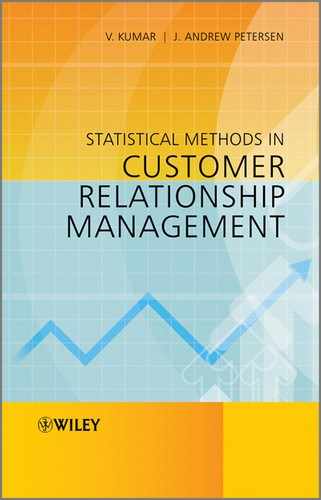8.1 Introduction
Up until now, we have explored and understood the four important steps of the CRM process: customer acquisition, customer retention, customer churn, and customer win-back. For each of these topics, we reviewed the key concepts, modeling issues, and key drivers that determine the acquisition, retention, churn, and win-back rates of a firm. A keen understanding of these CRM processes would enable firms to select the right strategies to maximize CLV, and thereby enhance firm profitability.
However, when it comes to implementing one or more of these four CRM processes, they are rarely based on any singular step, but rather based on an integrated outlook that is cognizant of the interlinkage between all them. For instance, depending on the desired outcome of the CRM initiatives, a manager might have to consider how to optimally allocate different resources across multiple steps of the process to increase the customer value (see Chapter 5 on balancing acquisition and retention as an example). This would make the manager speed acquisition, increase revenue through retention, delay attrition/churn, or make win-back more effective, or involve a combination of all of them. Figure 8.1 illustrates the typical customer life cycle and the strategic impact of implementing the CRM processes on the traditional CLV curve.
Figure 8.1 A typical customer life cycle.

Now we will step back and take a macroscopic view of the entire CRM process to see how all the CRM processes fall into place, when attempting to maximize firm value. In this chapter, we will discuss the application of the CLV metric. Specifically, we will focus on methodology to measure the individual customer's CLV and to implement a CLV-based marketing framework through two real-life case studies, one in a B2B and the other in a B2C setting.
The chapter is organized as follows. First, the approach to measure CLV and a numerical example are presented. Then, we illustrate the implementation of the CLV management framework through two case studies conducted in IBM (B2B setting) and a fashion retailer (B2C setting). Finally, the challenges in the implementation of the CLV model in these firms will also be discussed.
